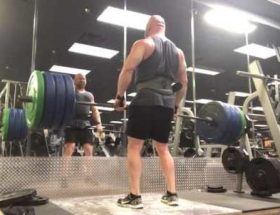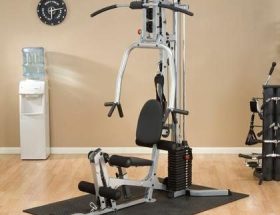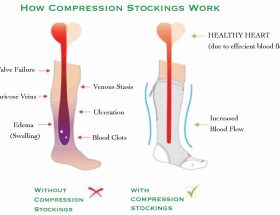Bodyweight exercises have gained popularity in recent years due to their convenience and effectiveness in improving strength, flexibility, and overall fitness. These exercises require no equipment and can be done anywhere, making them accessible to people of all fitness levels. While strength and endurance are essential components of bodyweight exercises, mobility plays a crucial role in performing these movements correctly and avoiding injuries. In this article, we will explore the importance of mobility in bodyweight exercises and how you can improve your mobility to enhance your performance.
What is Mobility?
Mobility refers to the range of motion around a joint or a series of joints. It is the ability to move freely, with control and without causing pain, stiffness, or limitations. Mobility is influenced by various factors, including joint structure, muscle length and elasticity, and connective tissue health. Achieving and maintaining optimal mobility is important for overall health and wellbeing, as it allows us to perform daily activities and physical exercises efficiently and with reduced risks of injuries.
The Relationship between Mobility and Bodyweight Exercises
Bodyweight exercises require adequate mobility to perform them with proper form and full range of motion. Without proper mobility, these exercises may become difficult to execute correctly, leading to compensatory movements, reduced engagement of targeted muscles, and increased risk of injuries.
Improved Range of Motion
Good mobility enables you to achieve a wider range of motion during bodyweight exercises, allowing your muscles to work through their full potential. For example, squats require adequate ankle and hip mobility to perform deep squats without compensations. With limited mobility, you may not be able to squat down low enough, resulting in your quadriceps and glute muscles not being fully engaged. Therefore, improving mobility in these joints can optimize your squat form and effectively target the intended muscles.
Enhanced Stability and Balance
Mobility is closely related to stability and balance. Poor mobility in certain areas of the body can lead to compensations in other areas, which can affect stability and balance during bodyweight exercises. For instance, limited mobility in the shoulders may cause a forward-leaning posture during push-ups, putting excessive strain on the lower back and reducing stability. By improving shoulder mobility, you can maintain proper form, engage the targeted muscles effectively, and enhance overall stability and balance.
Injury Prevention
Proper mobility helps to avoid injuries during bodyweight exercises. When you have optimal mobility, your joints and muscles can move through their full range of motion without excessive stress. With limited mobility, certain movements can place excessive strain on the muscles and joints that are compensating for the restricted range of motion. Over time, this can lead to muscle imbalances, joint issues, and increased risk of injuries. By maintaining good mobility, you can prevent imbalances and maintain proper form, reducing the likelihood of injuries.
Ways to Improve Mobility for Bodyweight Exercises
Fortunately, mobility can be improved through consistent practice and targeted exercises. Here are some ways to enhance your mobility to support your bodyweight exercise routine:
1. Dynamic Stretching
Dynamic stretching involves moving the joints through a full range of motion with controlled movements. Incorporating dynamic stretching before bodyweight exercises can help to warm up the muscles, increase blood flow, and improve joint mobility. Examples of dynamic stretches include arm circles, leg swings, and hip rotations. Start with small movements and gradually increase the range of motion.
2. Foam Rolling
Foam rolling is a form of self-myofascial release that helps to relieve muscle tension and improve tissue quality. By rolling the foam roller along your muscles, you can target tight areas and trigger points, promoting flexibility and mobility. Foam rolling can be beneficial for areas such as the calves, quads, glutes, and upper back. Spend a few minutes foam rolling before your bodyweight exercises to enhance mobility.
3. Yoga and Mobility Exercises
Participating in regular yoga or mobility classes can significantly improve your overall mobility and flexibility. These exercises focus on increasing joint range of motion, improving posture, and enhancing body awareness. Various yoga poses and mobility exercises can target specific areas of the body, such as hips, shoulders, and spine, which are commonly involved in bodyweight exercises. Incorporate these exercises into your routine to improve your mobility and enhance your bodyweight exercises.
4. Gradual Progression
Lastly, it is important to gradually progress your bodyweight exercises to allow your body to adapt to increased demands and develop adequate mobility. Start with exercises that match your current level of mobility and gradually increase the difficulty or intensity over time. It is essential to listen to your body and avoid pushing yourself too hard, as this can lead to overuse injuries or excessive muscle soreness.
Conclusion
Mobility plays a significant role in bodyweight exercises, allowing you to perform movements with proper form, full range of motion, and reduced risk of injuries. By improving your mobility through targeted exercises and regular practice, you can optimize your bodyweight exercise routine, enhance muscle engagement, and achieve better results. Remember to focus on areas that are commonly involved in bodyweight exercises, such as hips, shoulders, and spine. Incorporate mobility exercises into your routine, and gradually progress your exercises to challenge yourself while maintaining proper form. With improved mobility, you can unlock your body’s full potential and take your bodyweight exercises to the next level.








